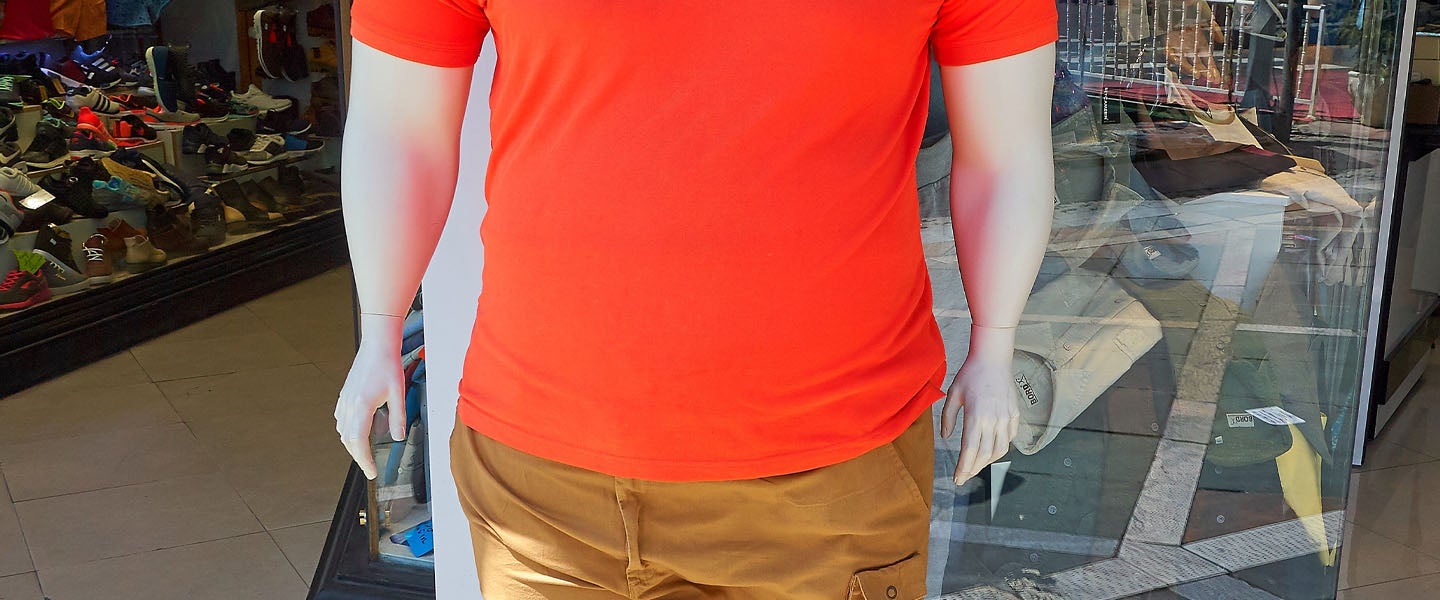For 99.9 percent of the human population, that finely dressed mannequin in the window display might as well have the measurements of an entirely different species. Most of us, even at our best physical selves, don’t measure up to the androgynous 6-foot tall plaster figurine with a washboard stomach and perfect posture. In fact, I’d go as far as to say that until recently, the only thing mannequins are good for is to remind us that the perfectly curated ensemble in the department store window only looks good if you have both the body of a mannequin, and its ability to stand perfectly still in an artfully detached pose for the entire time you’re wearing that outfit.
Mannequins have been making us feel inadequate for a while, too. Full-scale mannequins, made from wickerwork, first came into use in Paris in the mid-18th century. “In 1835 a Parisian ironmonger introduced a wirework model, and it was in France in the mid-19th century that the first fashion mannequins were developed,” per Love To Know. Interestingly, during the 1950s, mannequins were also used in nuclear tests to help show the effects of nuclear weapons on humans, which shows a startling lack of understanding of how human bodies actually work.
But perhaps as part of the general shift in what constitutes an acceptable appearance, or perhaps as some strange evolution caused by radioactive fallout, the bodies of mannequins are slowly starting to evolve. As we enter a new era of body positivity that highlights figures of all different types, that sometimes-headless plaster alien is also going through a much needed proportional makeover, resulting in: The dad bod mannequin.
I can finally see what the clothes are going to look like on me from pics
Based on this Reddit post, the first appearance of a bulbous-bellied mannequin was in 2015, and while it’s currently unclear which department stores are using these mannequins (so far, going by the Reddit thread, it seems to be only used in department stores), it’s fair to assume — based on the pattern and colors of the clothes that most often appear on these plaster bodies — dad-bod mannequins are there to show off your stereotypical plaid-shirt fatherly get-up.
To that end, based on conversations with customer service representatives from Mannequin Madness and Mannequin Mall, two of the largest online mannequin retailers, “plus size” and “middle age” mannequins are the more official names of these “dad bod” mannequins. “For women it’s called plus size, and for men it’s called Big and Tall,” says Julie, a customer representative at Mannequin Madness. According to their website, they also have another dad-bod-adjacent mannequin: “Donald Middle-Aged Male Big and Tall Mannequin.” But while Donald has one of the primary aesthetic characteristics of a middle-aged man — a receding hairline — he’s still, by any standard, in pretty damn good shape. The same could be said for Mannequin Mall’s “big and tall” version, which according to their customer representative is one of their best sellers, but which is also not really a “dad bod” mannequin.
Bruce Sturgell, founder of Chubstr, a style destination for big and tall or plus size men, tells me that the true dad-bod mannequin is a much needed addition to the inanimate plaster-human oeuvre. “It’s great to see that mannequins are being updated to better reflect actual customers,” says Sturgell. “Brands are slowly coming around to the idea that not everyone buying their clothes fits into a traditionally smaller size. That dad-bod mannequins are even a thing shows that companies are becoming more thoughtful around how to design clothing for bigger bodies.”
Dad Bod mannequins? ?♂️ pic.twitter.com/UCasZpSbJg
— Troy Osinoff (@yo) February 27, 2018
While Sturgell seems optimistic, there’s still a dearth of mannequins with really big bellies, and more more importantly, proportionally plump features. “That seriously looks like they just switched out a torso from a maternity mannequin,” writes one redditor. Another adds that no other part of the mannequin’s body is abnormally large except for the belly. “A realistic fat mannequin would have the fat distributed over more parts of the body,” they write.
All in all, it’s tough to believe that the notoriously body-conscious fashion industry is really embracing such figures — although the cynic might argue that, with a good chunk of its potential customer base now plus size, it would make good financial sense for them to do so. Still, in a continuing spirit of hopefulness, Sturgell says that he’s talked to several designers for well-known brands in the past year or so who are much more concerned with fit for plus size people than ever before. “It’s a positive trend I think we’ll see continue long term,” he says.
So, the dad-bod mannequin: An accurate representation of an actual big bellied man? A shameless marketing ploy? Or yet another idealized plaster mold that once again fails to represent the body type of a real human being sporting a dad bod?
Whatever the answer, one thing is sure: If you really want to know how those plaid golf pants are going to look on you, the only way to be sure it to try them on yourself.

